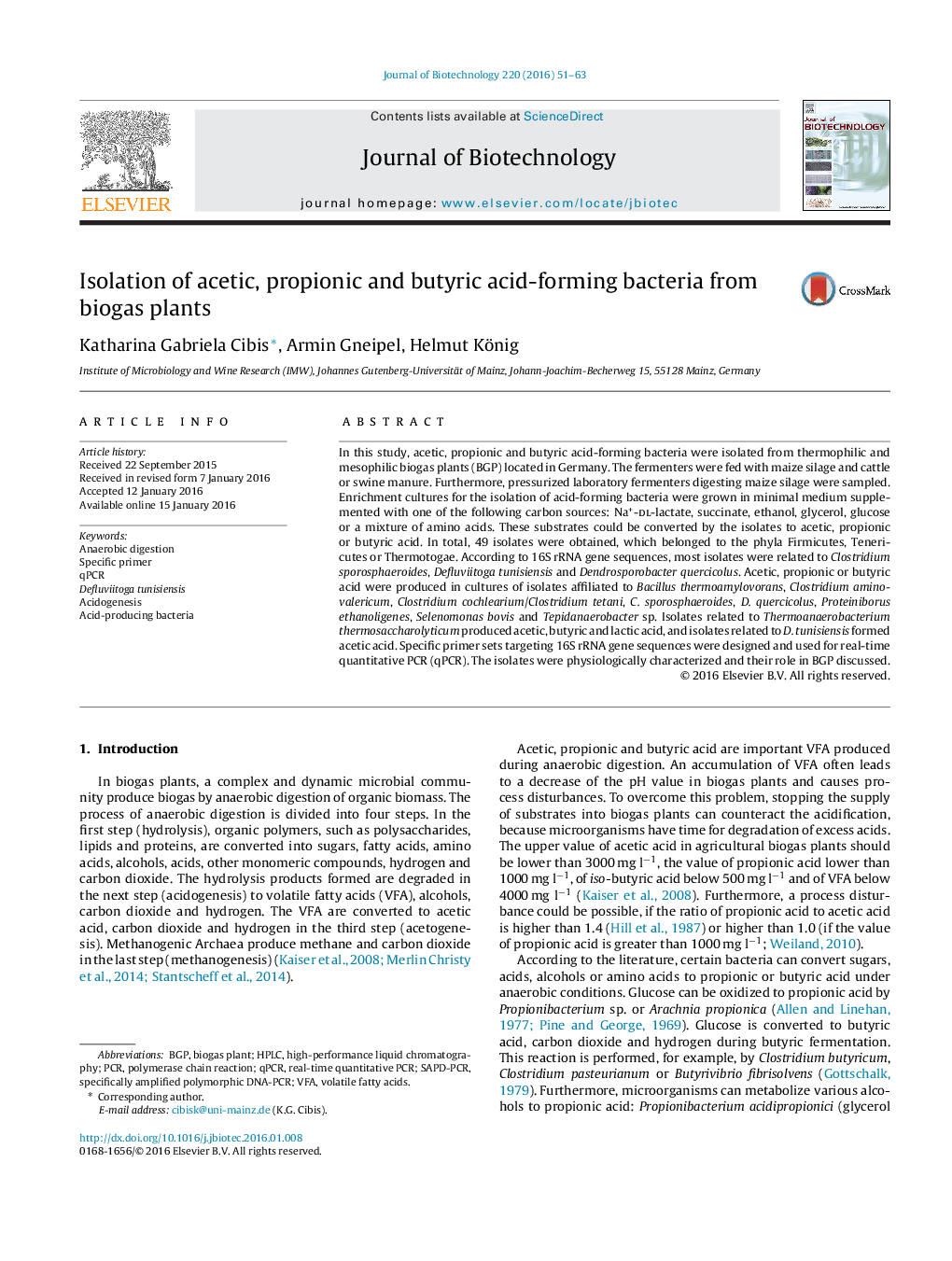| Article ID | Journal | Published Year | Pages | File Type |
|---|---|---|---|---|
| 22741 | Journal of Biotechnology | 2016 | 13 Pages |
•Data about bacteria involved in formation of acetic, propionic and butyric acid in BGP.•New and known species of acid-forming bacteria were isolated from BGPs.•Physiological features of the isolates are described.•The role of the isolates in the degradation process is discussed.•Design of specific primer sets for quantification of acid-forming bacteria in BGPs
In this study, acetic, propionic and butyric acid-forming bacteria were isolated from thermophilic and mesophilic biogas plants (BGP) located in Germany. The fermenters were fed with maize silage and cattle or swine manure. Furthermore, pressurized laboratory fermenters digesting maize silage were sampled. Enrichment cultures for the isolation of acid-forming bacteria were grown in minimal medium supplemented with one of the following carbon sources: Na+-dl-lactate, succinate, ethanol, glycerol, glucose or a mixture of amino acids. These substrates could be converted by the isolates to acetic, propionic or butyric acid. In total, 49 isolates were obtained, which belonged to the phyla Firmicutes, Tenericutes or Thermotogae. According to 16S rRNA gene sequences, most isolates were related to Clostridium sporosphaeroides, Defluviitoga tunisiensis and Dendrosporobacter quercicolus. Acetic, propionic or butyric acid were produced in cultures of isolates affiliated to Bacillus thermoamylovorans, Clostridium aminovalericum, Clostridium cochlearium/Clostridium tetani, C. sporosphaeroides, D. quercicolus, Proteiniborus ethanoligenes, Selenomonas bovis and Tepidanaerobacter sp. Isolates related to Thermoanaerobacterium thermosaccharolyticum produced acetic, butyric and lactic acid, and isolates related to D. tunisiensis formed acetic acid. Specific primer sets targeting 16S rRNA gene sequences were designed and used for real-time quantitative PCR (qPCR). The isolates were physiologically characterized and their role in BGP discussed.
